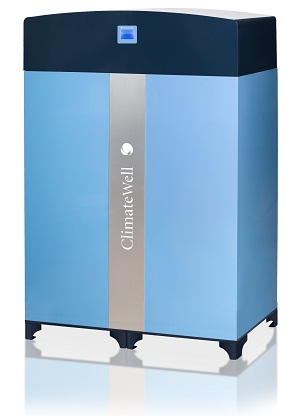Solar thermal heating and cooling is GE’s only solar winner
 Solar technology was mostly left out of the GE Ecomaginations Challenge’s first round of winners, announced earlier this week.
Solar technology was mostly left out of the GE Ecomaginations Challenge’s first round of winners, announced earlier this week.
Of the 12 companies granted a total of $55 million in partnership grants and the five emerging companies granted $100,000 each for their brilliant ideas to improve the smart grid, only Sweden-based ClimateWell directly employs solar technology, according to the company bios provided in a GE press release.
GE received more than 4,000 proposed ideas for increasing efficiency and generating more power for the next generation grid over the course of its 10-week competition.
Students, entrepreneurs, start-ups and established businesses promoted their inventions, ideas and products to the world, seeking votes from the public. Winning the popular contest did not guarantee businesses any more than $50,000 of the $200 million GE and venture capital firms had set aside for contest winners.
SolarRoadways, which won the popular contest with its proposal to pave the nation’s highways with solar panels, attended GE’s award ceremony Nov. 16, but did earn a GE partnership in this round.
The utility giant still has about $140 million to give to quality proposals, according to its press release.
Not only was solar left out of this first round, but energy generation technologies were also completely absent. All of GE’s new partners are focused on making power generation more efficient and reducing consumption.
Consert, JouleX, OPOWER, SynapSense Corporation, Scientific Conservation, Sentient Energy and FMC-Tech, which were awarded GE partnerships in the contest, have all created new ways for utilities to monitor and control power use and increase efficiency.
ClimateWell’s solar thermal cooling and heating system stands out against the other technologies selected by GE this week.
The module uses solar thermal generation to run, and those who install the system can use any solar thermal system they choose, ClimateWell CEO Per Olofsson wrote in an e-mail from Sweden.
The system is used primarily in large commercial buildings, but has been successfully scaled down and installed in 50 residential homes, Olofsson wrote.
Old heating and cooling ducts are typically retrofitted to work with ClimateWell’s system, Olofsson wrote.
“In new construction,” he wrote, “such as the Dubai office that gained Platinum LEED certification and was awarded Best Green building in the Middle East, we have used hollow core concrete slabs to gain higher inertia in the building, thus reducing the cooling power required.”
Olofsson wrote that he believes GE selected his company because the technology has the ability to reduce the world’s energy consumption by 10 percent by tackling one of the heftiest energy consumers—heating and cooling.
“The much reduced complexity of the technology also makes it highly applicable in appliances at an attractive cost,” Olofsson wrote.
GE announced in its press release that expects to employ ClimateWell’s technology in its appliances.



